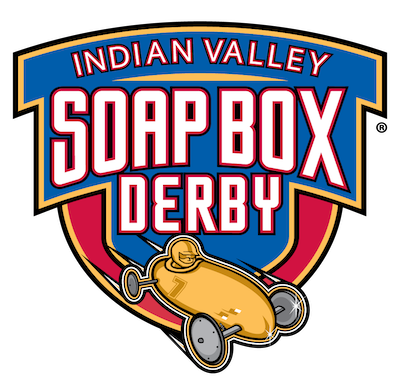History: The IndianValley Soap Box Derby
Tuesday, June 1, 2010
By Erin DuBois
Associate Editor
Souderton Independent
Looking back on the early days of soap box racing in Souderton, the words “breakneck speed” come to mind.
Things were a little more adventurous in those days, Souderton resident Norm Keller said.
The 12 boys who rolled down Main Street for the first time in 1941 didn’t have a 22-page rule book to worry about. Other than using standardized wheels from the Soap Box Derby Association, drivers built their cars however they wanted to.
Some were fairly crude affairs, while others were sleek and aerodynamic, Keller said.
“He who could build the fastest car, went the fastest,” Keller said.
Some cars sped along so fast that they wouldn’t stop until nearly reaching Broad Street, flying well beyond the finish line in the hollow on Main Street, Keller said.
Since there were no straw bales guarding the sidelines, drivers could crash into the curbs, the firehouse, or the spectators.
Two drivers hurtled into the crowd during the 1948 derby, inflicting broken legs along with cuts and bruises, according to “Seeing Souderton: The Borough’s Story in Photographs” by Phil Johnson Ruth.
Driving conditions were made even more precarious by the trolley tracks running down the concrete expanse of Main Street, causing drivers to wreck if they didn’t keep to one side of the tracks.
The fastest times, as of 1987, are recorded in “Souderton: A Century of Progress” as being held by two female drivers, despite the fact that girls were barred from the All American Soap Box Derby in Akron, Ohio until 1971, according to a 1988 “Sports Illustrated” article by Frank Deford.
Vivian Snyder of Slatington ran the course in 37.5 seconds in 1951, while Susan Farber of Minersville hit speeds of over 60 miles per hour in 1960. Race times, however, cannot be compared from one year to the next, since the hill was shortened over time for safety reasons.
The race used to begin near the American Legion building at Walnut Street and Main Street, instead of its current starting point at Central Street, Keller said.
The derby was suspended from 1952 until 1959, partly due to safety issues, according to “Souderton: A Century of Progress.”
The trolley tracks were removed, the hill was shortened, and eventually cars became standardized. The Indian Valley Soap Box Derby Association became the governing body for the derby.
While some aspects of soapbox racing changed, the fundamentals of good times with family and friends endured over time.
The entire community looked forward to the event, with many local businesses sponsoring cars, as they continue to do today, Keller said.
The Souderton Board of Trade sponsored the derby, with other businesses sponsoring individual drivers. Early sponsors included the Souderton Savings and Loan Association, Frederick’s Shoe Store and the Union National Bank, Keller said.
The businesses would frequently take over maintenance of the cars when a driver lost interest, and Keller remembers the Souderton Savings and Loan Association storing cars in its basement.
Keller looked forward to racing with groups from the Allentown area, even though their cars always seemed to go faster than Souderton drivers’ cars.
Even back then, out-of-towners were attracted to Souderton for its fast, natural hill, Keller said.
Although some drivers may have gone on to the All American Soapbox Derby in Akron, soapbox racing was a more localized event, just for fun, Keller said.
“As I sit and think about it, there’s a lot of good memories,” Keller said.
